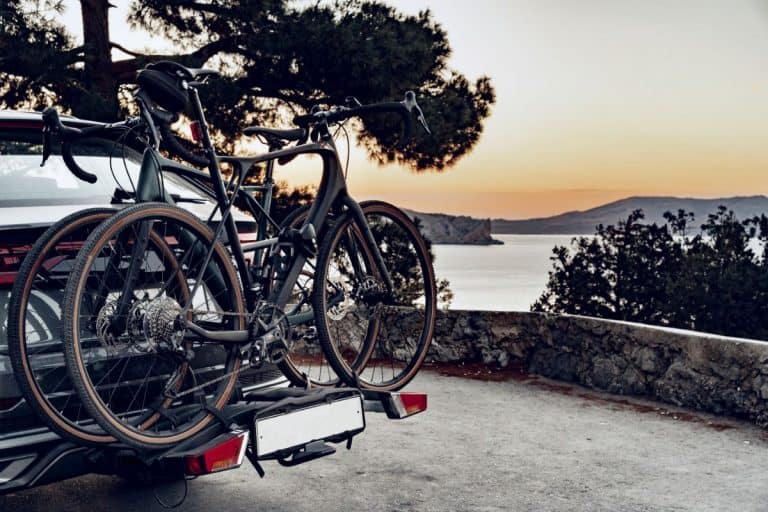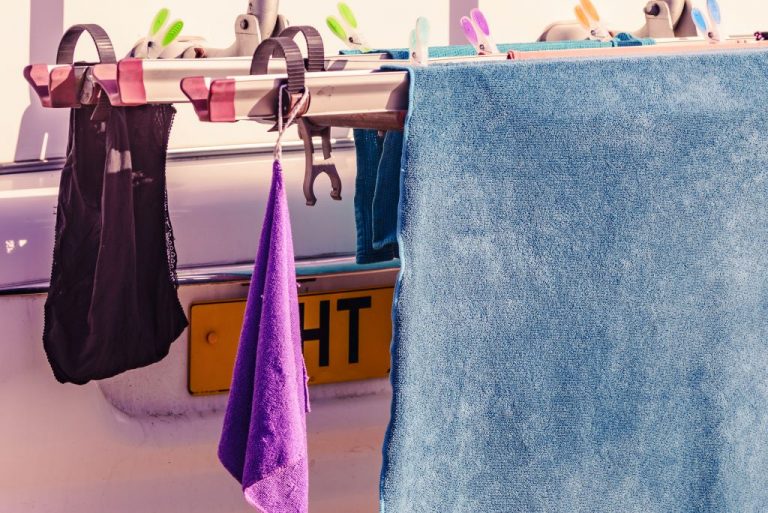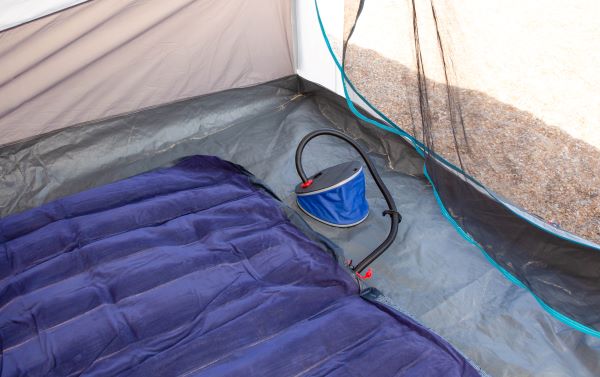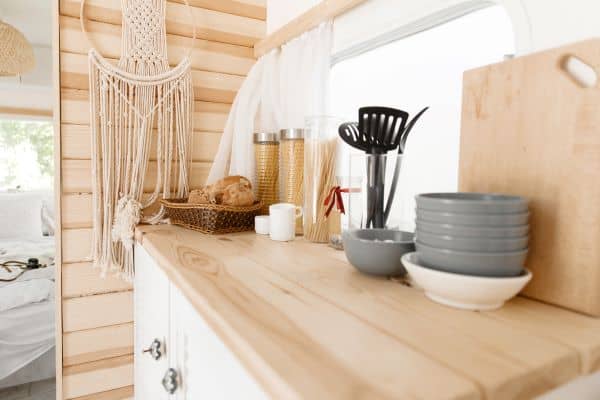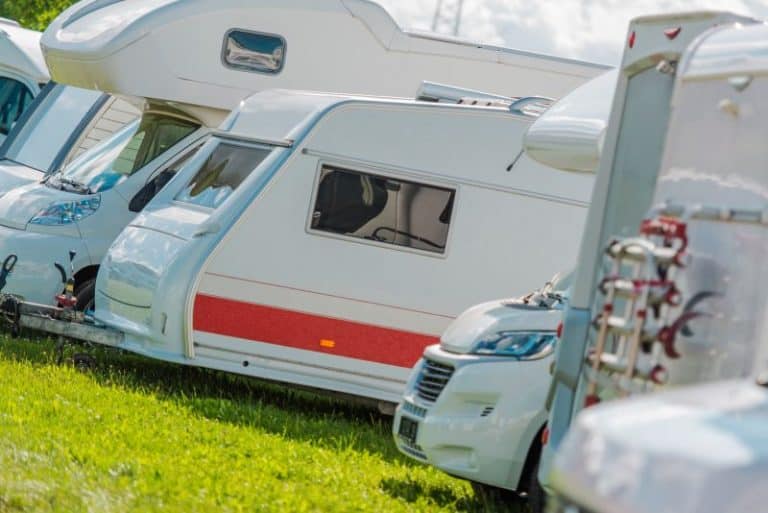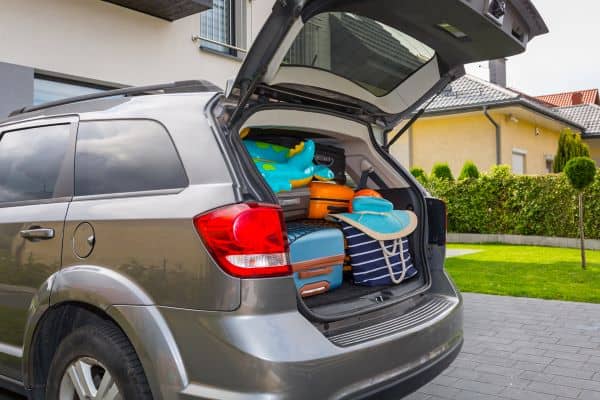What are the different types of Caravans and Camper Trailers?
If you are just starting to think about buying a camper trailer or caravan, it can be overwhelming when you look at all the options available. There are many different types of caravans and camper trailers currently in the market and they all have reasons for picking them.
The most common types of caravans and camper trailers are:
- Soft floor camper trailers
- Hard floor camper trailers
- Forward fold camper trailers
- Pop up camper trailers
- Hybrid campers
- Pop top caravans
- Expandable caravans
- Full / conventional caravan
- Fifth wheeler
- Motorhome
Which caravan or camper trailer you choose will be based on what the camper can offer and the needs of you and your family. If you are after rustic “roughing it” of sleeping in an upgraded tent, then a soft floor camper may suit your needs. If you want complete luxury with a kitchen and bathroom, then you are going to need to look at a full caravan.
So, let us take a bit more of a look at the types of caravans and camper trailers that are around.
Types of Camper Trailers
Camper trailers are a great way to explore the outdoors with a bit more comfort. If you have been sleeping in a tent or swag and would like a bit of an upgrade or you’re new to camping and not too sure about completely rouging it then a camper trailer may be for you.
However even in the camper trailer market there are a variety of options available.
Soft floor camper trailers
Soft floor camper tailers are the basic upgrade from a tent. They fold out (usually from the rear) into a large tent, with a bed over the trailer part. The tent floor rests on the ground with the bed on the trailer so the bed can be quite high, however some campers have a step or ladder. There is generally only one bed (double size) with other family members sleeping on the floor of the tent part. Most soft floor campers can also have an awning attached to create an undercover space.
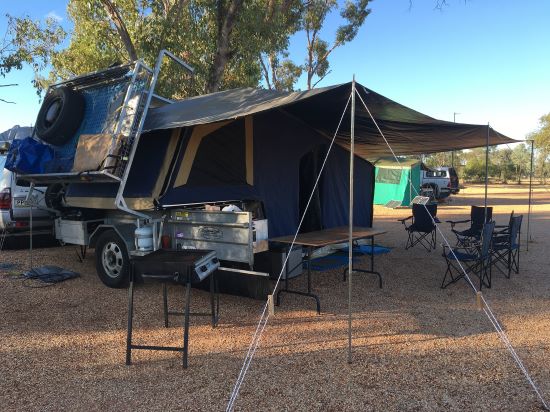
Soft floor campers create extra storage space to traditional tent camping set ups by generally having storage under the bed in the trailer and can also have boxes at the front for additional items.
Upgrades to soft floor camper trailers can include a slide out kitchen and annexes (with walls and floors) to create more rooms. These types of annexes are very handy as you can add to them as needed, such as just the awning roof for protection and one wall as a windbreak.
Soft floor campers can perform well when taking your camper in off-road situations as they usually weigh less compared to other types of camper trailers with similar features.
Hard floor camper trailers
Hard floor camper trailers are similar to soft fold except for one key difference – they have a hard top on the trailer which when folded out at the hinge, turns into a hard floor on the main tent. This means the main tent is slightly off the ground (usually about 10cm). The bed is on the trailer, with extra hard floor space opposite, perfect for a kids air mattress or cot.
Setting up a hard floor camper trailer is fairly straight forward but you will need mostly level ground. The opening of the trailer is via a winch, either wind up or electric to take the weight of the hard shell. There is generally storage under the bed in the trailer and they can also have a box at the front.
Most hard fold trailer manufacturers these days put in a pull out kitchen (although some may still be optional). They will also have an awning to provide protection over the kitchen.
Like soft floor campers, you can upgrade and get annexes for extra rooms. A lot of campers also have extra doors off the main tent, perfect for adding small tents for things like a portable toilet.
Hard floor camper trailers are heaver than soft floor due to the hard floor, however they are still a fairly good choice for off-road with the right suspension and car. You can also easily add a tinny boat onto the top of these campers due to the hard top or strap extra items on top. They are good for trips where you are constantly on the go as a lot of them don’t need to be removed from the car to be folded out and used. Perfect if you’re going to be somewhere different every night.
Both soft and hard floor camper trailers can be quite long when unfolded as you need room for the entire trailer and then the tent that usually extends from the rear. You may need to keep this in mind, especially on a larger camper as some caravan parks may not have sites long enough to fit them. Not a major problem but discuss your length with the park when you book.
Forward fold camper trailers
Forward fold campers are designed to give you a bit of extra living space. They have a hinge at the front of the trailer which folds open to have the bed over the draw bar and a living space in the trailer, generally a dining table and u-shaped lounge. Some of the campers also use the table the convert the lounge into an extra bed.
They can have a pull-out kitchen at the back end, and awning on the side. Like most campers that awning can be extended to an annex by adding walls and a floor (check with the manufacturer to see what is included as standard).
They are good because you have an instant bed and living room once opened, so you do not need to set up anything more to have somewhere to eat, sit and sleep. You can set them up easily and they are easier to tow than caravans if you’re going on dirt. And unlike rear fold campers, their footprint does not extend once folded out (as they open over the drawbar), so you can fit them into smaller spaces to use.
Due to their design, the axels and wheel arches are set further back, which means that forward fold campers tend to have a heavy ball weight which is something to be aware of when towing. It’s also impacted further by having a lot of storage at the front of the camper. They also don’t have the traditional storage in the trailer like other campers, as it is taken up by the living area.
Pop up camper trailers
Pop up campers are a great option for couples or families that want a step up from a camper trailer, but don’t want a full caravan. They have a hard base and roof that “pops up” with beds that extend out. They will have a living area and usually a full kitchen inside as well.
With these types of campers you wind up the roof to full height to expose a hard bottom half, with canvas for the top half. The floor is well off the ground with steps up to the door like a caravan. There are ones available with a double bed at one end, or a double bed at one end and a single bed at the other, or a double bed at both ends. These beds usual push out to make the space for the living and kitchen areas in the middle.
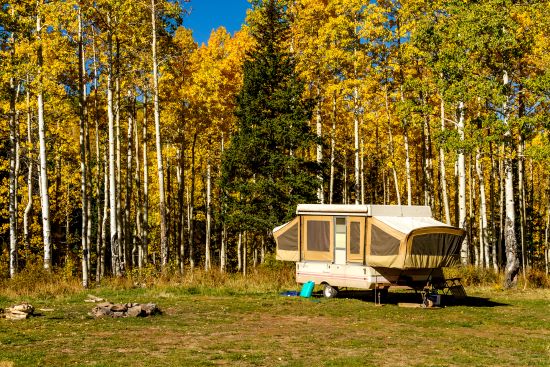
You will generally find a dining area and kitchen with fridge, sink and stovetop and some also come with an extra lounge area. Higher end models can also come with a griller, oven or even a microwave. Awnings can be put onto the door side of the camper as well as being able to add walls onto some awnings to form an annex room.
These campers are easier to tow than full caravans as they are much smaller when packed up, but they still have the benefits of a caravan such as a kitchen and living areas as well as beds ready to go. They are also easier to store at home, requiring less room. However due to their compact size they generally do not have bathroom facilities.
Pop up camper trailers are a good choice if you are wanting a bit more than your standard camper trailer, but aren’t quite ready for the step up to a caravan.
Types of Caravans
Caravans are ideal for those that want to be able to pull up somewhere and have everything ready to go. Depending on the type, caravans usually require very little set up time, especially when compared with most camper trailers and tents.
Hybrid caravans
Hybrid caravans are a cross between a caravan and camper trailer. Hybrid caravans have solid side walls but then pop up at the top to give extra height. They are smaller than a caravan but bigger than most camper trailers allowing for more features such as a toilet, if not a full bathroom.
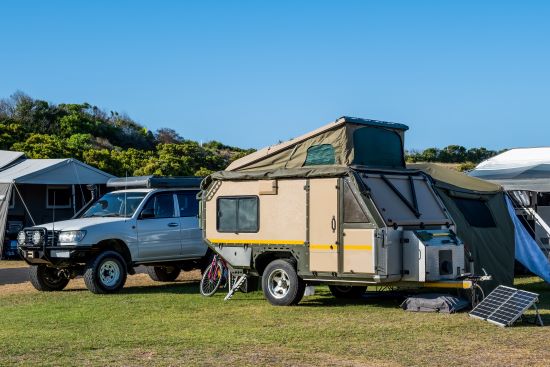
Due to the hard walls and door hybrids are completely lockable like a caravan. Manufacturers try to make them more compact, and this can lead to some features being more “camper trailer” such as pull out kitchens on the outside. Most features that are included on a hybrid are very manufacture specific and they can vary wildly in this market. Some hybrids are more compact and tend more to the camper trailer style of doing things whereas others look more similar to caravans.
Hybrids can be a bit narrower than a regular caravan and are not as tall due to their pop top nature, meaning they are a bit easier to tow, better to navigate on tight bush tracks and better on fuel economy than a full caravan.
Pop top caravans
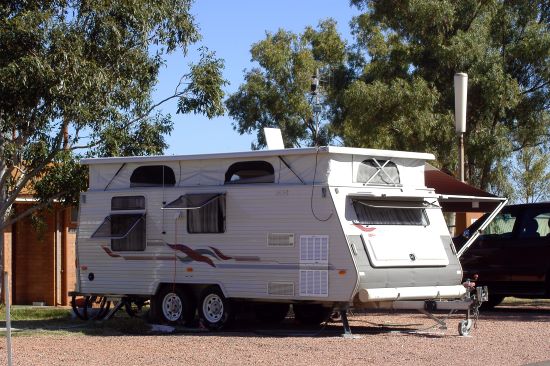
Pop top caravans are named because the top part of the caravan pops up to give extra height, but the rest of it is built like a normal caravan. They generally have all the features of a caravan, such as kitchens, beds, living areas and bathrooms.
The main reason for going for a pop top caravan over a normal caravan is that it has a smaller travelling height and can therefore be towed along lower clearance tracks around the country. This makes them a popular choice for off-road vans.
Expandable caravans
Expandable caravans have sections in the walls of the caravan that expand out – usually at the ends for beds or sometimes even the side for a lounge. They allow for a slightly smaller sized caravan to tow without compromising space or features inside.
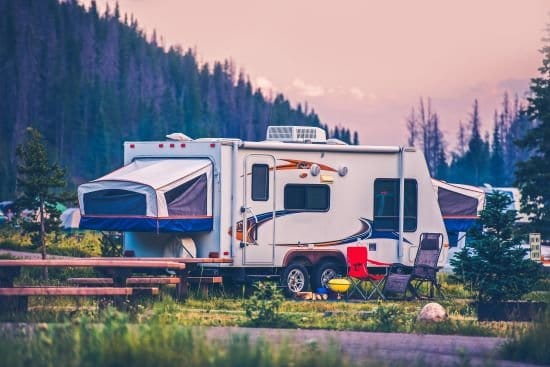
Full / conventional caravan
This is what most people first think of when you hear the word caravan. These days there is no specific shape as there are now so many different types on the market, however they are essentially a rectangular aluminium house on wheels.
Caravans can range in length from 3 metres to 10 meters. They can be single axle or dual axle depending on the size and capabilities.

Most caravans are self-contained, so contain a bedroom, kitchen, lounge / dining and bathroom. You can add many more features including awnings and annexes outside. Caravans have the added bonus of power and can be connected to 240v or be entirely self sufficient with a batter and solar setup.
Full caravans are the choice for many people who want to do big, or longer trips. It is a popular choice for most doing a lap around Australia as they have minimal set up time – you just open the door, and everything is ready for you.
Fifth wheeler
The term 5th Wheeler is derived due to the motorhome connecting to the towing vehicle via a turntable or ‘wheel’ allowing articulated motion. Fifth wheelers are generally a lot bigger than regular caravans and so need a vehicle with a large tow ability to be able to pull them. Some can only be pulled with a truck.
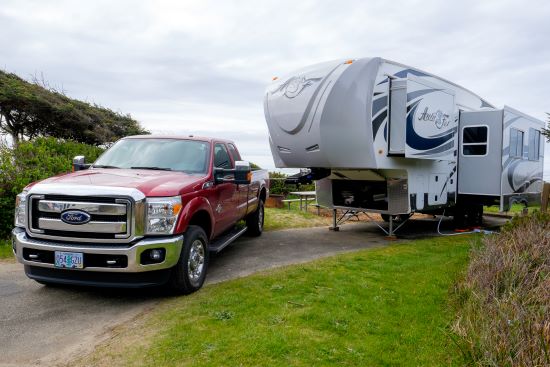
Bigger size means more features and some fifth wheelers are extremely luxurious. It can literally seem like you are living in house. This can be beneficial if you have a large family that just won’t fit into a normal caravan.
Motorhome
Motorhomes are built on a truck chassis and have the features of a caravan. They are generally fully self-contained with kitchens and bathrooms and are very comfortable. You also don’t have to tow anything and can be more easily reversed into campsites.

The main negative of a motorhome is you must take your ‘house’ with you everywhere. Unlike a towed trailer, you cannot leave it behind if you want to travel somewhere for the day. This can mean you cannot travel to more remote places, and you have to pack up ever time you want to go somewhere – even if it’s just to pop to the shops for some milk.
What to think about when choosing between a camper trailer or caravan
The decision between a camper trailer and a caravan can be a difficult one. There are many pros and cons for both types. When making the decision there are a few things you can ask yourself to help you make the choice that is right for you.
What features do you need?
Some people are happy with a bed and outdoor pull out kitchen. Others want a full bathroom. How many beds do you need? Are you happy to do a bit of set up or do you want to be able to park and have it all ready?
Figure out what features are must have in your new camper and then look at what is going to meet those needs.
On road or off road?
Where are you going to be travelling? If it is only ever on bitumen roads and highways and staying at caravan parks, then there is no need for an off-road van, and you can save some money by not needed features such as improved suspension. If you are wanting to go off-road and remote places, then you need to make sure that the van you choose can handle the conditions and won’t fall apart after a day of corrugations.
How much are you willing to spend?
Sometimes the decision can come down to cost. In almost all situations caravans are more expensive then camper trailers.
Camper trailers can cost as little as $6,000 – $7,000 for a soft floor tent trailer to over $50,000 for some of the hard floor or pop top versions. Off road versions are more expensive than on road due to the upgrades needed, and the more features you have the more expensive they are.
On road caravans can be had from as little as $35,000 new, for a small simple example up to six-figure territory if you want a big one with everything. Off-road caravans often add between $5,000 to $20,000 of cost to the price of a similarly equipped on-road version.
What car do you have?
All cars have a maximum towing capacity and you need to work out what yours is before buying any camper trailer or caravan. If you only have a smaller sedan car, you may be limited to a camper trailer, and even that may need to be a lighter one with less features. If you have your heart set on a 21 foot caravan with all the trimmings, you may need to look at upgrading your car as well.
Look at your cars operating manual or do some research to get the specifics on your model of car and what you can safely tow.
Where will you store it?
What space do you have available to store your camper? Camper trailers are smaller and therefor easier to find space for. They can usually easily be stored in a garage or by the side of a house. You need to consider the height and width of a caravan if you are thinking of storing it at home to see if it will fit or alternately think of other options, such as storing it at a storage facility.
Ongoing costs
The purchase price of your caravan or camper trailer is not the only cost you’ll have with it. Things like insurance, maintenance costs, upgrades and storage fees (if needed) all add up. Consider how much your potential purchase will cost you per year before making your final decision.
There are many different kinds of camper trailers and caravans on the market today as well of hundreds of manufacturers to choose from. Which one you eventually go with will come down to what fits your needs, the features you want, and how much you are willing to spend. Hopefully this guide has given you a place to start thinking.

